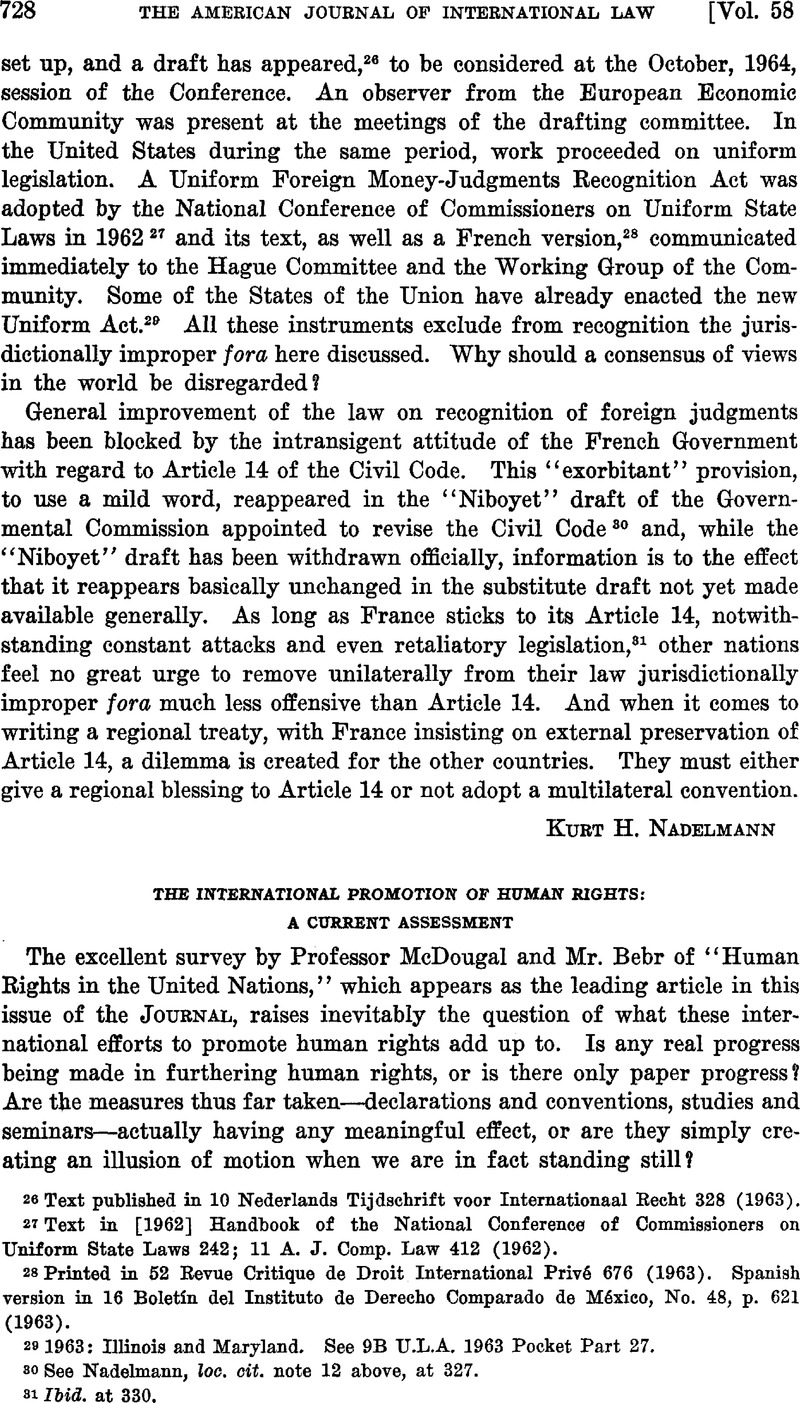Article contents
The International Promotion of Human Rights: A Current Assessment
Published online by Cambridge University Press: 28 March 2017
Abstract

- Type
- Notes and Comments
- Information
- Copyright
- Copyright © 1964 by The American Society of International Law
References
1 The three conventions are: (1) The Supplementary Convention on the Abolition of Slavery, the Slave Trade, and Institutions and Practices Similar to Slavery; (2) the Convention on the Abolition of Forced Labor; and (3) the Convention on the Political Rights of Women. See President Kennedy's letter of July 22, 1963, to Lyondon B. Johnson, President of the Senate, transmitting the three conventions (White House Press Belease dated July 22, 1963; reprinted in “Contemporary Practice,” 58 A.J.I.L. 184 (1964)). See also Deputy Assistant Secretary of State Richard Gardner's speech on “Human Rights—Some Next Steps,” made before the Botary Club of Tpsilanti, Michigan, on Aug. 5, 1963 (Dept of State Press Release 403 of Aug. 3, 1963; 49 Dept. of State Bulletin 320 (1963).
2 Address on ‘ ‘ The International Promotion of Human Rights: Problems and Opportunities” to the World Jewish Congress, New York, N. Y., on Dec. 8, 1963 (U. S. Mission to the United Nations Press Release 4333 of Dec. 6, 1963). See also President Kennedy's speech before the U.N. Eighteenth General Assembly on Sept. 20, 1963, in which he stated: “New efforts are needed if this Assembly's Declaration of Human Rights … is to have full meaning.“ 49 Dept. of State Bulletin 534 (1963).
- 2
- Cited by




